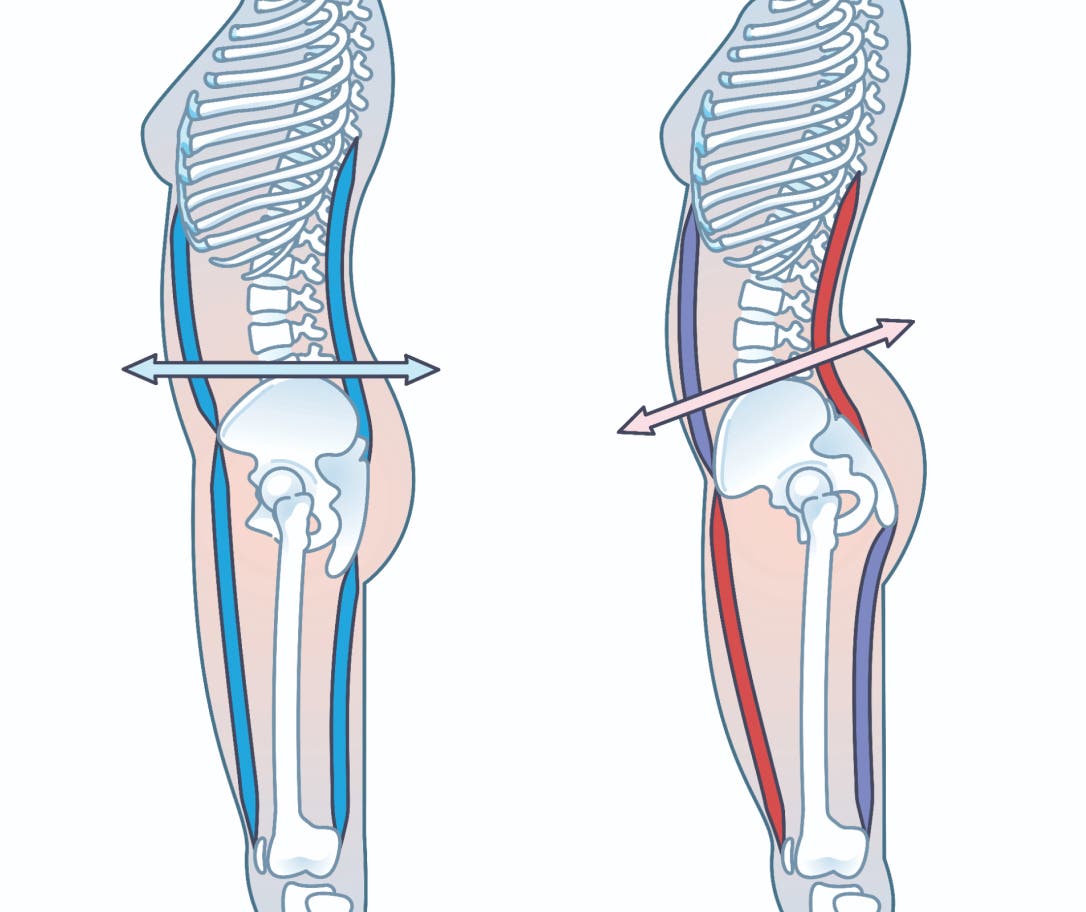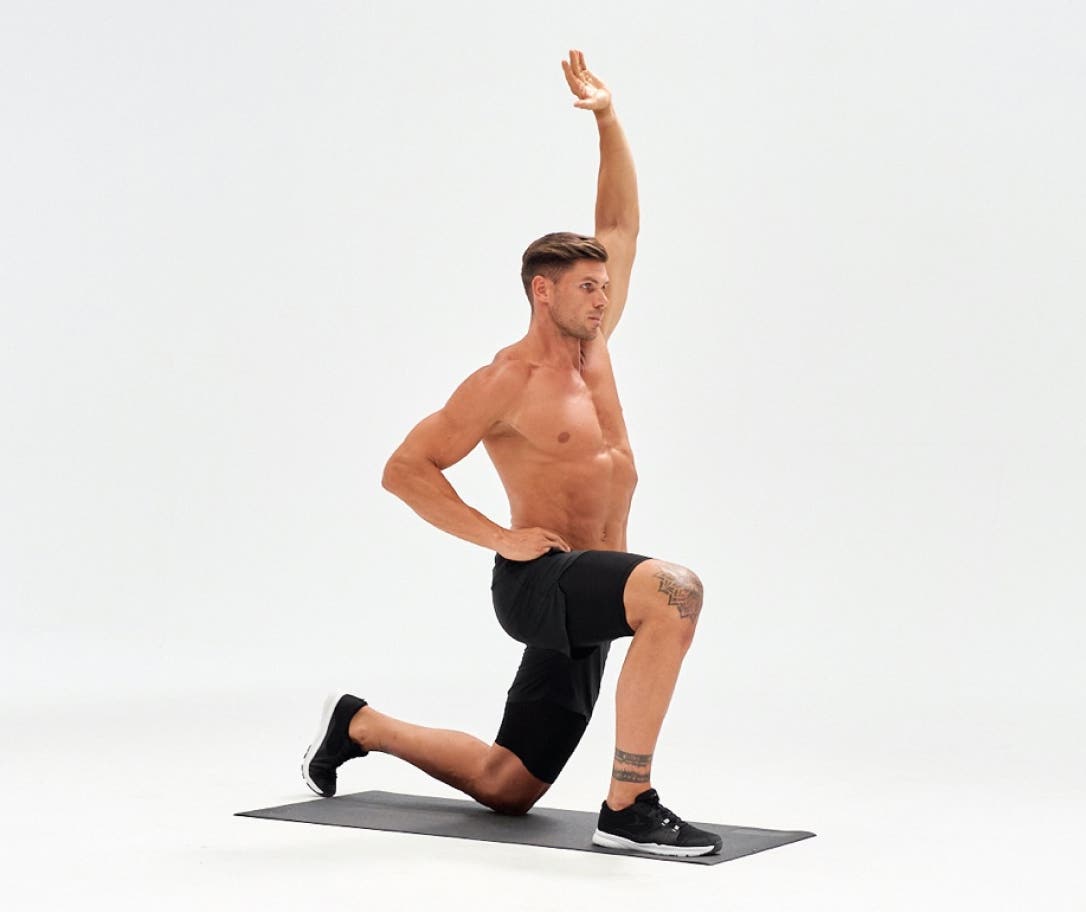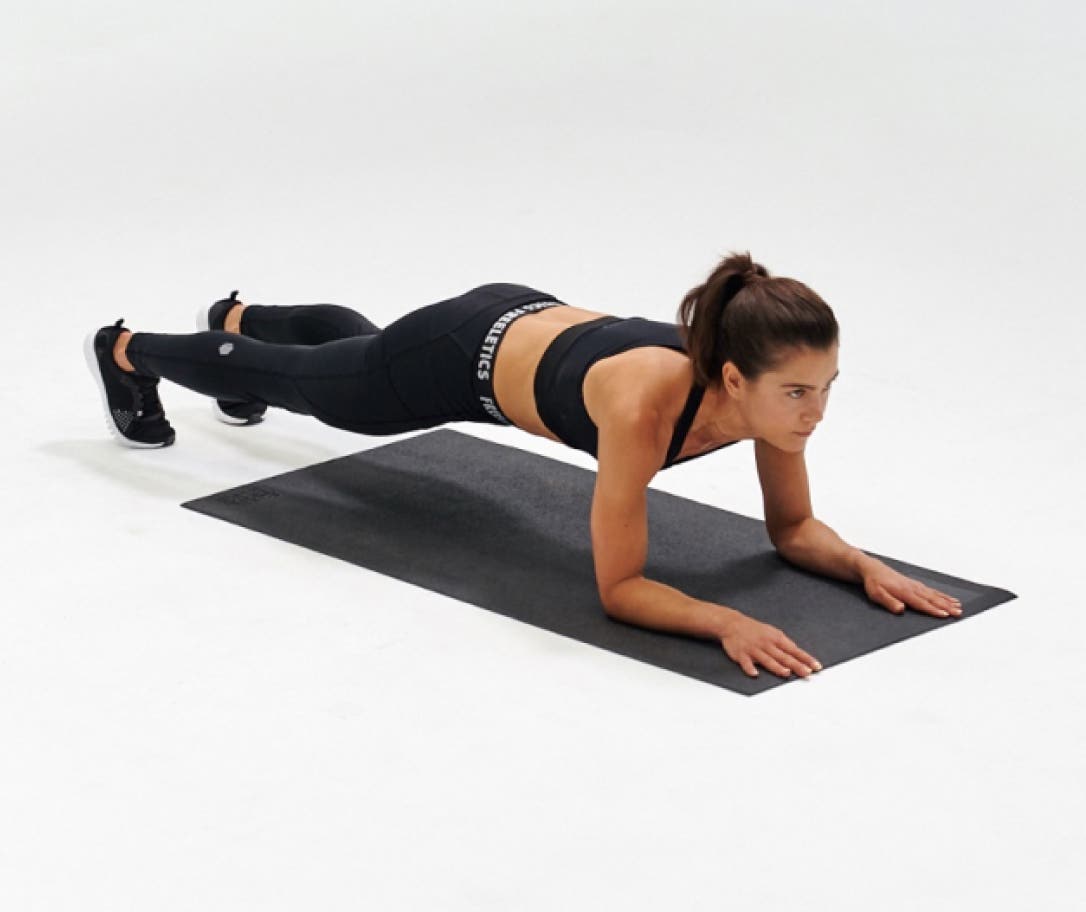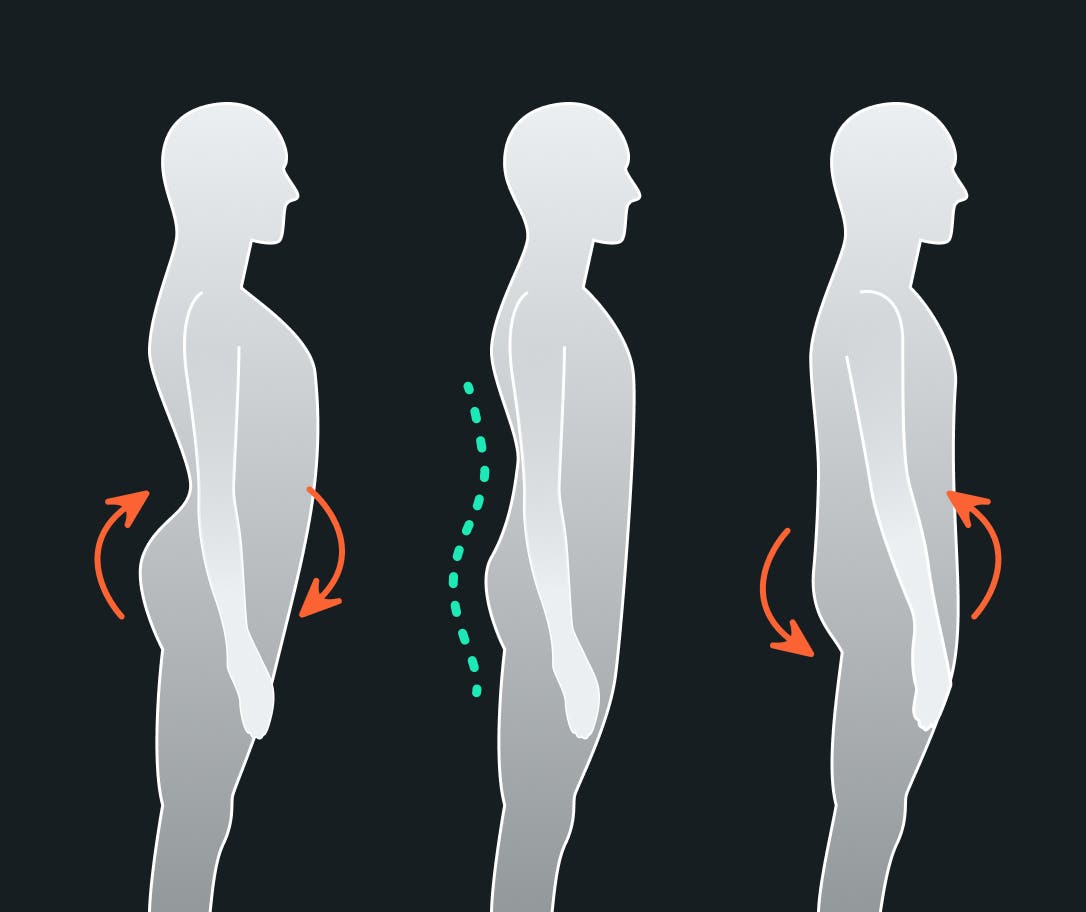Lower back pain is one of the most common health issues worldwide. And it’s impact is all-encompassing, affecting day-to-day activities and overall quality of life.
While lower back pain can have many causes, one of the biggest contributors is hyperlordosis or an excessive arch in the lower back. Let’s explore the common causes of this condition, how to address it, and strategies to correct it for a healthier, more active life.
Common causes of excessive arch in the lower back
Tight hip flexors from sitting
Sitting for long periods has become the norm in our technology-driven world – especially for office workers and students. As a result of this sedentary lifestyle, the hip flexors, the muscles located at the front of the hips that allow the leg to move, can feel painful and tight.
When these muscles contract, they pull the pelvis forward. This causes a forward tilt and intensifies the natural curve of the lumbar spine.1
In certain cases, this misalignment can have a domino effect – leading to muscle imbalances and tension in surrounding areas, as well as contributing to discomfort and pain. And it’s not only prolonged sitting that can have an impact on your hip flexors.
They can also become tight from repetitive movements, such as running or cycling, when these movements are not counteracted. That’s all the more reason for athletes to deal with this issue before it gets worse.

Elevated heels
Footwear is another critical factor influencing spinal alignment. Wearing only shoes with a higher heel than the sole, such as high heels, running shoes with elevated cushioning, or even certain dress shoes, can disrupt the body's natural alignment.
When you raise the heels, the body's center of gravity shifts forward, forcing the pelvis to tilt forward. This can create a chain reaction that affects the lower back, knees, hips, shoulders, and neck.
Over time, wearing only such footwear can lead to chronic pain and a variety of musculoskeletal issues. Plus, it’s all the more reason why we should be more mindful when choosing our footwear.
Weak core and glutes
The core muscles and glutes are vital in stabilizing the pelvis and spine. Weak abdominal muscles cannot adequately support the lumbar region, and weak glutes can lead to inefficient hip mechanics. Together, these weaknesses can contribute to the excessive arch in the lower back.2
A strong core is responsible for maintaining spinal stability during movement, while the glutes help control hip motion and alignment.
When either of these muscle groups is weak, the spine can become strained and misaligned. This ups the chances of discomfort and injury, which no athlete wants or has time for.
Being less active
Physical inactivity is considered a major contributor to pain in the lower back. A sedentary lifestyle leads to weak muscles and tightness in areas that support the spine, increasing postural imbalances.
Regular movement is key to maintaining muscle strength, flexibility, and overall spinal health. Inactivity not only affects the back but can also lead to a range of health issues.
This can include obesity, cardiovascular disease, and reduced bone density. Regular physical activity can counteract these effects, promoting better posture and reducing the risk of lower back pain.
Why you should want to address an overly arched lower back
1. Prevent chronic pain and injuries
One of the most convincing reasons to address an excessive arch in the lower back is to prevent possible chronic pain and injuries. If left uncorrected, the misalignment can lead to a cascade of issues. This includes muscle strains, ligament sprains, and disc problems.
2. Reduced compensation from other areas
When you excessively arch the lower back, other areas of the body often try to compensate for the misalignment. And this can lead to pain and dysfunction elsewhere.
For example, the hips and knees may bear the brunt of the misalignment, causing discomfort in these areas and radiating to the lower back.
3. Reduced lower back discomfort
Addressing an excessive arch in the lower back can lead to immediate relief from discomfort. Many individuals report a noticeable decrease in pain after implementing simple corrective measures, such as stretching and strengthening exercises to the surrounding muscles.
4. Longevity of movement and activity
Staying active as we age is essential for maintaining physical health and quality of life. Correcting postural imbalances and reducing pain can enable individuals to remain active and engaged in physical activities longer.
And this commitment to movement goes a long way – it contributes to better cardiovascular health, improved muscle tone, and enhanced mood. Better yet, it creates a positive feedback loop that promotes overall well-being.
What you can do
1. Loosen and stretch key muscles
To deal with an excessive arch in the lower back, it’s important to target specific muscle groups for stretching:
- Hip flexors: Stretching the hip flexors can alleviate tightness and help realign the pelvis. Effective stretches include Lunges, the Pigeon, and the Butterfly Hold.
- Quadriceps: Tight quadriceps can worsen pelvic tilting. Stretches such as the Standing Quad Stretch, where you pull your heel toward your glutes while standing, are an excellent way to release tightness in this muscle group.
- Lower back: Gentle stretches like Child’s Pose, Cat-Cow, or Side Stretch Left/Right can relieve tension in the lower back and promote better alignment.

2. Strengthen core and glutes
- Core exercises: Mix in exercises such as Planks, Hip Raises, and Dead Bugs into your fitness routine. These exercises engage the entire core, including the rectus abdominis and erector spinae, providing stability and support to the lumbar region.
- Glute strengthening: Include exercises like Squats, Lunges, and Hip Raises to effectively strengthen the glutes and improve extension in your hips. Strong glutes are essential for maintaining proper hip mechanics and pelvic alignment.

3. Develop postural awareness
- Pelvic tilt cues: Practice finding a neutral pelvis by gently tilting the pelvis forward and backward. This awareness can help individuals self-correct their posture throughout the day, whether sitting or standing.3
- Neutral spine: When sitting, standing, or walking, focus on maintaining a neutral spine. This involves keeping the natural curves of the spine in alignment and avoiding excessive arching.

4. Choose the right footwear
Investing in flat or zero-drop footwear can help mitigate the effects of an anterior pelvic tilt. These types of shoes promote a more natural alignment of the spine and pelvis, reducing strain on the lower back.
Look for shoes that provide adequate arch support and cushioning without elevating the heel.
5. Avoid prolonged sitting
Reducing the amount of time spent sitting in the same posture is essential for maintaining a healthy spine. Set an alarm and take mini breaks every hour to stand up, stretch, or even take short walks.
Opt for a standing desk or adjustable workstation, which also encourages more movement throughout the day. Make sure to check out our guide to better posture to correct any bad habits.
And no need to overcomplicate it. Simple activities like walking meetings or short strolls during lunch breaks can greatly improve your overall mobility and comfort. If you can’t go walking, make sure to vary your sitting position.
6. Incorporate regular exercise
Engaging in a regular exercise routine that includes aerobic, strength training, and flexibility work can boost overall musculoskeletal health. Activities like swimming, cycling, or yoga can help maintain muscle strength and flexibility while promoting better posture and spinal alignment.
Let’s recap
Lower back pain is incredibly common these days, thanks to a combination of lifestyle factors and postural imbalances, particularly an excessive arch. And a lot of these factors like poor shoe choices, a weak core and glutes, and a sedentary lifestyle are actually in our control.
With the right tools and prevention strategies in place, you can prevent chronic pain, promote overall body balance, and most importantly, rid yourself of pain and discomfort. Trust us, when it comes to your back, it’s definitely a “no pain, more gain” kind of situation that’ll set you up a more active, pain-free lifestyle as you age.
Sources
[1] Adams, M. A., & Dolan, P. (2005). The biomechanics of back pain. The Medical Clinics of North America, 89(4), 827-839.
[2] Ghasemi, A., & Aghaei, H. (2020). Core stability training and its effects on pain and function in patients with chronic low back pain: A systematic review and meta-analysis. Clinical Rehabilitation, 34(10), 1167-1179.
[3] Lee, J. H., & Kim, K. J. (2017). The effects of sitting posture on lumbar lordosis and pelvic tilt. Journal of Physical Therapy Science, 29(2), 257-262.